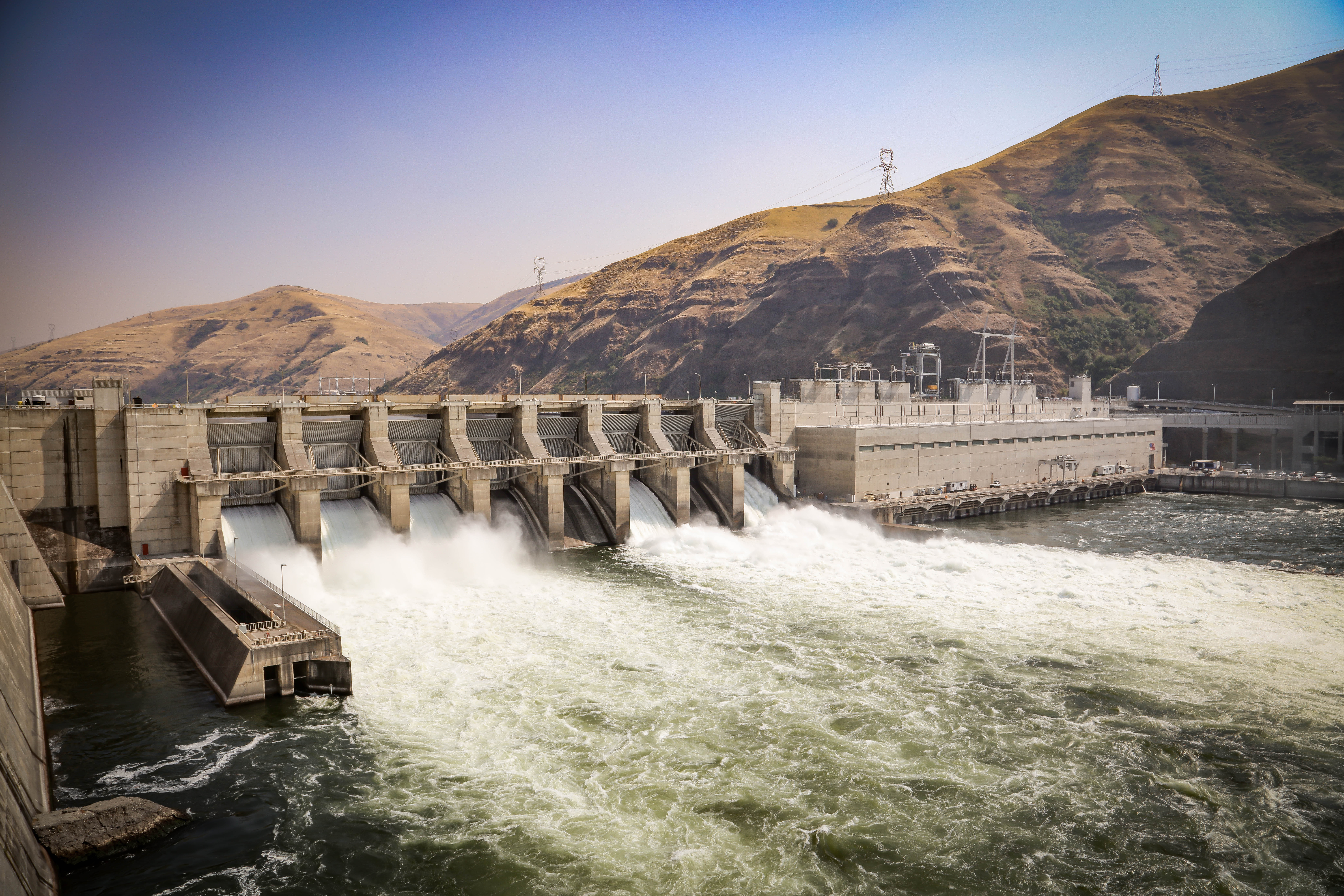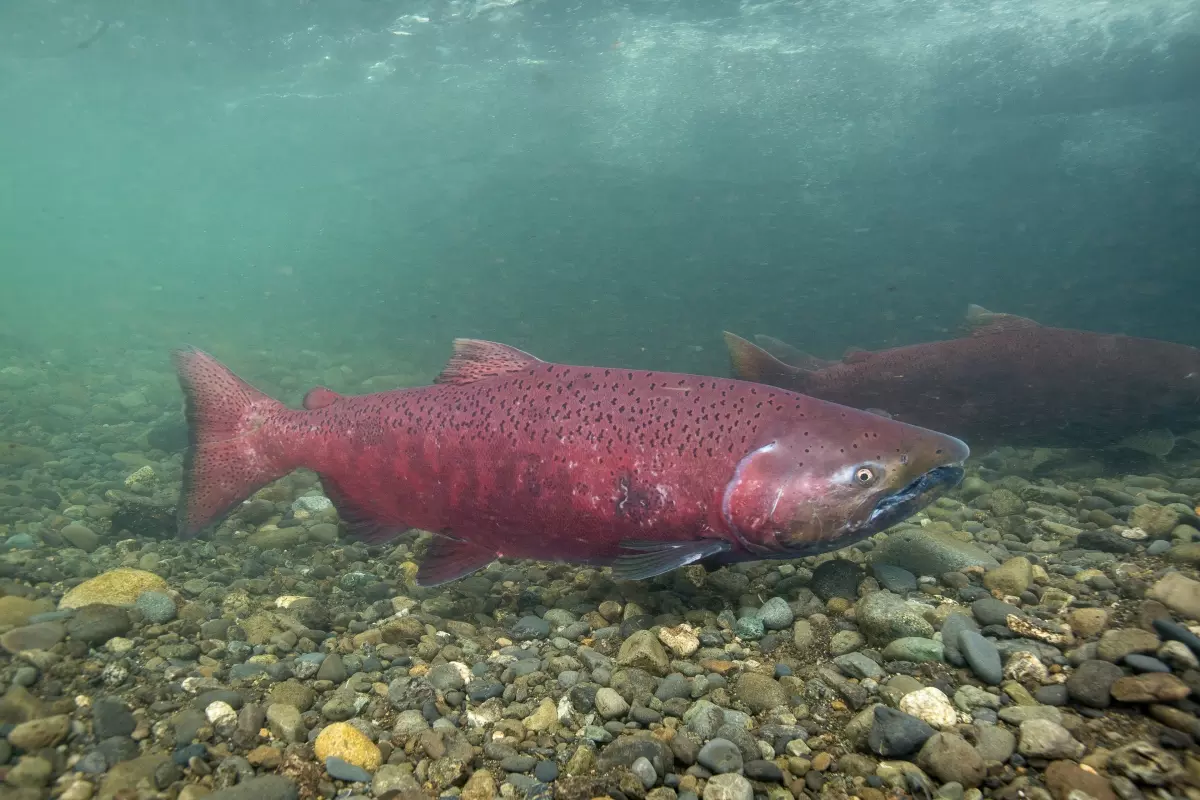Why rural Nevada electric co-ops are watching proposals to remove Snake River dams

Hundreds of miles away from rural Northern Nevada, water gushes through dams in the lower Snake River. These dams, barriers in the Columbia River Basin, have long been controversial for harming wild salmon populations and violating Native American treaty obligations.
In recent months, tribes and conservation groups have renewed calls to remove the dams, but the proposals face a complicated political calculus, skepticism across the political spectrum and opposition from distant energy utilities including those in northeastern Nevada.
The four Washington dams produce cheap electricity, often when the grid needs it most. That electricity is sent far and wide from across the Pacific Northwest, including to the Nevada town of Wells.
“When you look at the Lower Snake dams, a number of issues come to us,” said Clay Fitch, who serves as CEO of the Wells Rural Electric Company. “The big deal is reliability.”
Wells, a town of roughly 1,200 people, is about 50 miles east of Elko. Unlike major population centers in Nevada, Wells does not get its power from NV Energy, the state’s largest utility. The Wells Rural Electric Company instead is responsible for ensuring the lights turn on, serving about 6,000 customers — homes, businesses and mines — over 11,000 square miles. Its service territory extends as far west as Carlin and east to Wendover.
“Our customers are far and few between,” Fitch said, adding they rely almost solely on hydropower.
The Wells co-op and three other rural utilities in Nevada get a portion of their electricity from the Bonneville Power Administration, an arm of the federal government. It delivers hydropower in the Columbia River Basin, which touches small northern sections of the state. And Bonneville’s portfolio includes electricity generated from four hydroelectric dams in the lower Snake River.
It’s also why Elko County is raising concerns about their proposed removal. Last month, the Elko County Commission unanimously approved a letter opposing the removal of the dams, calling it “irresponsible and short-sighted.”


In late September, President Joe Biden called “for a sustained national effort to restore healthy and abundant native fish populations” in the Columbia River Basin. Beginning in the 1930s, the federal government started building dams that boosted the region’s power supplies but blocked salmon, steelhead and other fish species from reaching their freshwater spawning grounds.
The dam construction came after decades of commercial activity that took a major toll on fish populations. Today, 13 salmon and steelhead species in the Columbia River watershed are considered to be threatened or endangered, while other species have already disappeared.
“Our fish are on a trajectory of going extinct,” said Mitch Cutter, salmon and steelhead associate for the Idaho Conservation League. “And so we know that we need to save those fish and do as much as we can right now to change that trajectory and bring them back to a stable population.”
Breaching the dams, Cutter said, could “even the odds for our fish here in Idaho,” where much of the Snake River runs before its confluence with the Columbia River. Tribal governments, including those in the Columbia River area with treaty rights to fish in the river, have also pushed federal water managers to take down the dams to improve salmon habitat.
At the Society of Environmental Journalists’ conference earlier this year, Shannon Wheeler, vice chairman of the Nez Perce Tribal Executive Committee, stressed that treaty rights ensured tribal members could “fish at all usual and accustomed areas,” as they had for thousands of years.
“We didn’t sign up to not have fish,” Wheeler said. “We signed up to have fish in perpetuity. Not fish on life support.”
Proposals to breach the four lower Snake River dams have gained traction in recent years. In 2021, Rep. Mike Simpson (R-ID) introduced a $33 billion package to tear down the dams, while paying to replace the electricity and offset the impact on local communities. But debate around removing the dams is politically complex, scrambling typical partisan divisions.
Last year, Washington Gov. Jay Inslee and Sen. Patty Murray (D-WA), both Democrats, released a report recognizing the impact of the dams, but said breaching the dams was not a “responsible or feasible” option until the lost electricity was replaced and the economic benefits of the dam were mitigated. While hydropower dams can block fish from reaching their spawning habitat, they often provide a cleaner source of power that does not rely on burning fossil fuels.
The Biden administration stopped short of calling for the dams to be breached, but many believe the federal government could be moving in that direction — or at least considering it. And some local and regional groups, including Nevada power providers, are pushing back.
Many rural co-ops that service Nevada get electricity from hydropower. As small nonprofits that bring remote energy, they often do not have much leeway to replace one power when a source of supply goes away. In the southern part of the state, rural co-ops rely on power delivered from transmission lines running from Colorado River dams, including the Hoover Dam. Those utilities have faced risks, in recent years, from drought and a curtailment of hydropower from the dams.

In Northern Nevada, four rural electric co-ops — Wells Rural Electric, Surprise Valley Electrification Corp, Raft River Rural Electric and Harney Electric Cooperative — rely on electricity produced by the Columbia River Basin dams, which include the lower Snake River projects. Together, they have raised concerns about breaching the lower Snake River dams.
Carolyn Turner, the executive director of the Nevada Rural Electric Association, said that "there would be pain felt by the end-use consumer here in our state” if the dams were removed. She said that her organization has yet to see a viable and cost-effective proposal for replacement power, at least one that ensures a stable grid and does not create new fossil fuel emissions.
Power customers, Turner said, pay for “state-of-the-art mitigation” to protect salmon and other fish species. And the dams are not the only threat to salmon runs. Fish species in the Columbia River watershed face numerous additional threats, including rising ocean temperatures.
Without a viable option for replacing power generated from the dams, Fitch, who runs the Wells co-op, said that his customers could expect retail rate increases of as much as 30 percent.
“We’re retiring coal and gas as quickly as we can retire them across the nation and region to meet the climate goal,” Fitch added during a phone interview earlier this month. “To take off a very viable carbon-free energy source at the same time just doesn’t make any sense.”
But politicians across the aisle have acknowledged that the status quo is not working. Despite billions invested in salmon recovery, fish populations in the lower Snake River remain in a delicate balance, facing significant threats to their survival. With Biden’s call for an approach to ensure “healthy and abundant” fish populations, some federal action could come in the future.
Elko County Commissioner Rex Steninger, a Republican, said that he backed the county’s letter opposing dam breaching to ensure members of the state congressional delegation knew where the community stood, as breaching the dams would likely require congressional action. The letter noted that “local industry, from ranching and small businesses to gaming and mining operations that employ our residents, benefits from the affordable electricity provided by those dams.”
After the vote, Steninger added, “I guess that’s another example of a country originally founded by geniuses and currently run by idiots — if they are going to take these dams down.”
Editor's note: This story was updated on 11/13/23 at 9:18 a.m. to correct that Clay Fitch is CEO of the Wells Rural Electric Company.
